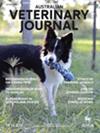To evaluate hepatopathies in Australian dogs according to the World Small Animal Veterinary Association (WSAVA) guidelines. Specifically, to describe the prevalence and survival of dogs with copper-associated hepatopathy.
Medical records from the Small Animal Specialist Hospital were reviewed to identify dogs with liver disease and liver biopsy between November 2008 and November 2021. Liver histopathology reports were reviewed with a board-certified veterinary pathologist and classified according to the WSAVA guidelines. Histopathology reports and clinical records were reviewed to ascertain the most important histological process for statistical analysis. Copper-associated hepatopathy was defined as (i) histological evidence of copper accumulation in centrilobular areas (Zone 3) associated with hepatocyte necrosis, inflammation with copper-laden macrophages and chronic hepatitis (ii) histochemical copper staining showing hepatocyte copper accumulation in the centrilobular areas and iii) hepatic copper measurement with concentrations greater than 600 μg/g dry weight of liver. Dogs with primary inflammatory parenchymal disease included dogs with copper-associated hepatopathy, idiopathic chronic hepatitis, non-specific reactive hepatitis, chronic bacterial hepatitis and immune-mediated chronic hepatitis. Descriptive statistics were performed for all dogs. Age, weight and clinicopathologic data were compared between dogs with copper-associated hepatopathy and dogs with other causes of chronic primary inflammatory parenchymal liver disease (Kruskal–Wallis test). Survival times were calculated and compared (Kaplan–Meier curves and log rank test) between dogs with copper-associated hepatopathy and dogs with other chronic primary inflammatory parenchymal liver diseases. Breed was evaluated to determine the breed most commonly affected with copper-associated hepatopathy and identify any breed in which this disease has not previously been described.
Sixty-seven (43 female, 24 male) dogs with a median age of 7.8 years (quartile [Q] Q1-Q3 4.5–9.6 years) were included. Thirteen dogs had copper-associated hepatopathy, eight dogs had idiopathic chronic hepatitis, eight dogs had non-specific reactive hepatitis, seven dogs had disorders associated with portal hypertension, five dogs had chronic bacterial hepatitis and four dogs had immune-mediated chronic hepatitis. Compared with dogs with other causes of chronic primary inflammatory parenchymal liver disease, dogs with copper-associated hepatopathy tended to be younger (6.73 vs. 8.01 years, P = 0.057) and heavier (19.8 vs. 9.6 kg, P = 0.052) than dogs with other causes of primary chronic inflammatory parenchymal diseases. There was no statistically significant difference when ALT (P = 0.30), ALP (P = 0.18) and total bilirubin (P = 0.13) were compared between the two groups.
The median survival time for all dogs after liver biopsy was 2010 days (CI 1321 days – not reached). There was no significant difference in survival between dogs with copper-associated hepatopathy and dogs with other causes of chronic primary inflammatory parenchymal liver disease (P = 0.5).
Copper-associated hepatopathy was common among Australian dogs with chronic hepatopathies, occurring in younger and heavier dogs than other causes of primary inflammatory parenchymal liver disease. Clinical pathology is not useful for differentiating between copper-associated hepatopathy and other causes of chronic primary inflammatory parenchymal liver disease. When copper-associated hepatopathy is treated, the prognosis can be good. This is the first report of copper-associated hepatopathy in Australian Cavalier King Charles Spaniels.


